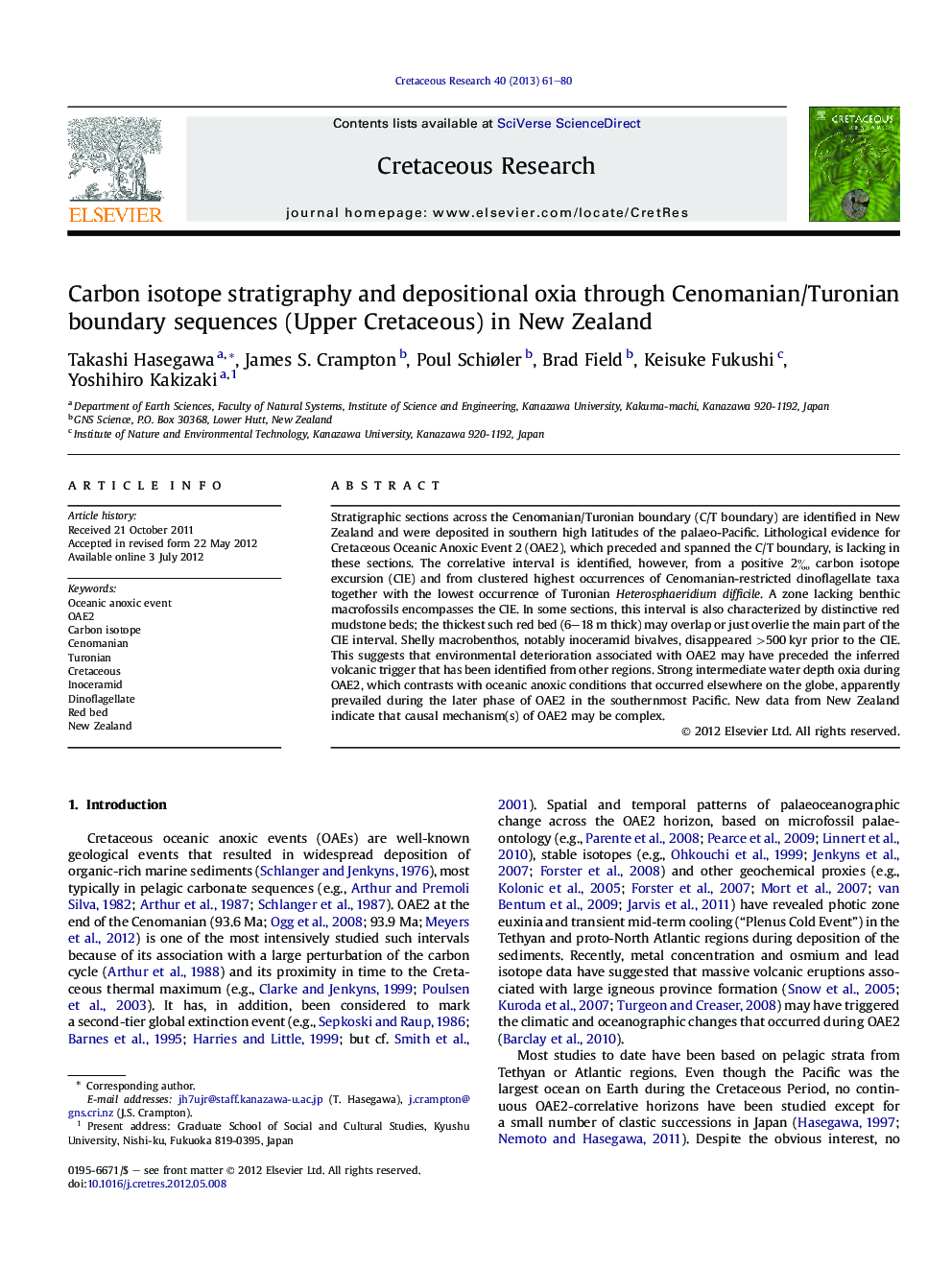| Article ID | Journal | Published Year | Pages | File Type |
|---|---|---|---|---|
| 4747175 | Cretaceous Research | 2013 | 20 Pages |
Stratigraphic sections across the Cenomanian/Turonian boundary (C/T boundary) are identified in New Zealand and were deposited in southern high latitudes of the palaeo-Pacific. Lithological evidence for Cretaceous Oceanic Anoxic Event 2 (OAE2), which preceded and spanned the C/T boundary, is lacking in these sections. The correlative interval is identified, however, from a positive 2‰ carbon isotope excursion (CIE) and from clustered highest occurrences of Cenomanian-restricted dinoflagellate taxa together with the lowest occurrence of Turonian Heterosphaeridium difficile. A zone lacking benthic macrofossils encompasses the CIE. In some sections, this interval is also characterized by distinctive red mudstone beds; the thickest such red bed (6–18 m thick) may overlap or just overlie the main part of the CIE interval. Shelly macrobenthos, notably inoceramid bivalves, disappeared >500 kyr prior to the CIE. This suggests that environmental deterioration associated with OAE2 may have preceded the inferred volcanic trigger that has been identified from other regions. Strong intermediate water depth oxia during OAE2, which contrasts with oceanic anoxic conditions that occurred elsewhere on the globe, apparently prevailed during the later phase of OAE2 in the southernmost Pacific. New data from New Zealand indicate that causal mechanism(s) of OAE2 may be complex.
Graphical abstractFigure optionsDownload full-size imageDownload as PowerPoint slideHighlights► Cenomanian/Turonian boundary and C-isotope excursion (CIE) identified in New Zealand. ► C/T boundary CIE located in an interval that is barren of macrofossils. ► C/T boundary CIE correlated with red beds, suggesting oxic conditions during OAE2. ► Environmental changes linked to OAE2 may have started earlier in NZ than elsewhere.
